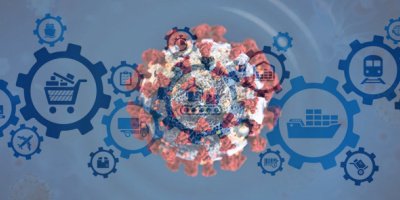Today, IBM is unveiling a new line of aggressively priced iSeries servers, along with a dramatically different system for configuring and pricing each model. Between the new hardware, software, and packaging enhancements, most customers could realize cost savings that range from 30% to 80% over previous iSeries servers. Among the many elements of this announcement, the following ones are the most important.
- Four new server models--the iSeries 800, i810, i825, and i870--and an enhanced i890
- Support on the new servers for POWER4 processors (i825, i870, and i890 only), increased disk storage capacities, and faster I/O subsystems that utilize PCI-X controllers and adapters
- Additional capabilities such as On/Off Capacity Upgrade on Demand, support for additional Integrated xSeries Servers and xSeries Adapters, and the ability to run 5250 applications without using interactive CPW cycles if they are browser-enabled via the WebFacing tool
- Packaging options that eliminate interactive CPW feature codes and replace them with a single price for unlimited 5250 performance capacity
- A simplified software pricing model that could reduce application costs for many customers
The New iSeries Servers
At the heart of today's announcement is a new family of iSeries servers that offers substantial price/performance improvements over the previous generation of systems. The new models will be available for ordering on January 28 and will start shipping on February 21. The following charts compare specifications for the new models (shown in gray) to those of current models.
The iSeries 800 and 810--Comparisons to Current Models
|
Model 250
|
iSeries 800
|
iSeries 270
|
iSeries 810
|
iSeries 820
|
|
|
# of CPUs
|
1-way
|
1-way
|
1- to 2-way
|
1- to 2-way
|
1- to 4-way
|
|
Processor CPW Options
|
50, 75
|
300, 950
|
150, 465, 1070, 2350
|
1020, 1470, 2700
|
370, 600, 1100, 2350, 3700
|
|
Interactive CPW Options
|
15, 20
|
25, 35, 50
|
0, 25, 30, 50
|
0 or maximum
|
0 to 2000
|
|
Max. Memory
|
1 GB
|
8 GB
|
8 GB
|
16 GB
|
32 GB
|
|
Max. Disk
|
70 GB
|
4 TB
|
840 GB
|
14 TB
|
8 TB
|
|
Software Tier
|
PPS, P05
|
P05, P10
|
P05, P10, P20
|
P10, P20
|
P10, P20, P30, P40
|
|
IXS Cards
|
0
|
4
|
3
|
13
|
12
|
|
IXA Adapters
|
0
|
3
|
2
|
7
|
8
|
The iSeries 800 and i810 are IBM's replacements for the models 250 and i270 as well as the one- and two-way configurations of the i820. Like the most powerful versions of the i270 and i820, the iSeries 800 and i810 utilize S-Star processors. However, they differ from their predecessors in the following key areas.
- The iSeries 800 and i810 offer significantly higher disk storage capacities because they support new 70 GB drives that are twice as large as existing drives. These drives connect to new PCI-X Ultra RAID disk controllers that support more disk arms at higher throughput rates than current models.
- As the previous bullet indicates, the iSeries 800 and i810 utilize a PCI-X based I/O subsystem that is much faster than the PCI subsystem found in the models they replace. The PCI-X slots will support most PCI adapters, but will also support high-speed PCI-X adapters and devices. As part of the switch to PCI-X, IBM is also announcing new PCI-X based I/O towers, tape/disk controllers, and a high-performance I/O processor for the new iSeries models, including the iSeries 800 and i810.
- Unlike the 250 and some older i270 models, all iSeries 800 and i810 configurations support logical partitions (LPARs). The iSeries 800 supports up to four OS/400 partitions and nine Linux partitions. The one-way i810 supports the same number of LPARs as the iSeries 800; the two-way i810 supports up to eight OS/400 LPARs and 19 Linux LPARs.
- Unlike current models, the iSeries 800 and i810 require OS/400 V5R2. This is the only OS/400 release for which patches will be available to support the new PCI-X subsystems.
The other big difference between these two models and current servers is price/performance. While IBM is not publishing list prices for the new models until January 28, the company has revealed some estimated prices that are quite aggressive. For instance, an iSeries 800 with a processor CPW of 950 and an interactive CPW of 50 will cost around $38,000. According to IBM, these are roughly the same price/performance levels that customers received when they bought a similarly equipped Model 270-2432 with 50 interactive CPWs under last year's Greenstreak promotion. While I won't say this for certain until I see the list prices, it is likely that the iSeries 800 and i810 will come close to matching Greenstreak price/performance levels.
Speaking of Greenstreak and interactive CPWs, you may have noticed in the table above that the i810 offers "zero or maximum" interactive CPWs. Unlike the iSeries 800, which customers purchase with set amounts of interactive CPWs, the i810 comes in a Standard Edition that has no interactive CPWs or an Enterprise Edition that puts no limits on interactive workloads. I'll say more about Standard and Enterprise Editions later in this article, so keep reading.
The iSeries 825 and 870--Comparisons to Current Models
|
iSeries 820
|
iSeries 825
|
iSeries 830
|
iSeries 870
|
iSeries 840
|
|
|
# of CPUs
|
1- to 4-way
|
3/6-way
(POWER4) |
2- and 4/8-way
|
8/16-way
(POWER4) |
8/12, 12/18, and 18/24-way
|
|
Interactive CPW Range
|
370 to 3700
|
3600 to 6600
|
1850 to 7350
|
11500 to 20000
|
9000 to 20200
|
|
5250 CPW Range
|
0 to 2000
|
0 or maximum
|
0 to 4550
|
0 or maximum
|
120 to 20200
|
|
Max. Memory
|
32 GB
|
48 GB
|
32 GB
|
128 GB
|
128 GB
|
|
Max. Disk
|
8 TB
|
58 TB
|
22 TB
|
144 TB
|
37 TB
|
|
Software Tier
|
P10, P20, P30, P40
|
P30
|
P30, P40
|
P40
|
P40, P50
|
|
IXS Cards
|
12
|
36
|
28
|
48
|
32
|
|
IXA Adapters
|
8
|
18
|
16
|
60
|
32
|
The i825 and i870 are replacements for the four-way i820, the i830, and the i840. Like the iSeries 800 and i810, the i825 and i870 differ in many ways from the servers they replace. Here are the major differences.
- Like many pSeries models, the i825 and i870 utilize the POWER4 processor running at either 1.1 GHz (the i825) or 1.3 GHz (the i870). This is the first time that IBM has "cascaded" the POWER4 chip from the i890 down to smaller iSeries models.
- Unlike some of the current n-way models, all i825 and i870 configurations include standby processors that provide Capacity Upgrade on Demand (CUoD) capabilities. The i825 comes standard with three active and three standby processors, while the i870 comes with eight active and eight standby processors. On either model, customers can ask IBM to activate some or all of the standby processors at the time of ordering. Alternatively, customers can activate standby processors later when they require additional capacity.
- Besides offering CUoD as a standard feature, the i825 and i870 provide a new feature that enables customers to temporarily activate standby processors. The feature, known as On/Off or Temporary CUoD, allows an iSeries shop to boost its performance during business peaks or when trying out new applications, then deactivate the standby CPUs. To encourage customers to experiment with On/Off CUoD, IBM will provide customers with as many as 14 "processor days" (that's one standby processor activated for one day) to try out the feature for free.
- While current models can only support four OS/400 LPARs per processor, the i825 and i870 can support up to 10 OS/400 LPARs per processor. This will allow users to create smaller OS/400 partitions, a feature that will be particularly useful for programmers who need an isolated testing environment. Though the new models support more OS/400 LPARs per processor, the maximum number of OS/400 LPARs they can support remains at 32.
-
Like the iSeries 800 and i810, the i825 and i870 offer greater disk capacity because of their support for 70 GB drives and controllers that can manage more disk arms.
- The i825 and i870 can also support considerably more Integrated xSeries Server (IXS) and Integrated xSeries Adapter (IXA) cards than previous models. This improves their ability to act as consolidation and management platforms for Windows servers.
- Like the i810, the i825 and i870 come in a Standard Edition that has no interactive CPW capability or an Enterprise Edition that puts no limits on interactive CPWs.
Besides announcing the i825 and i870, IBM also enhanced its high-end i890. Like the i825 and i870, the i890 will support the new 70 GB drives and PCI-X controllers; this will double its maximum disk capacity to 144 TB. All i890 models will also support On/Off CUoD on their standby processors and up to 10 OS/400 LPARs per processor. Like the new i870, they will also support 48 IXS and 60 IXA cards.
On the pricing and packaging front, owners of the i890 will be overjoyed to know that IBM is eliminating the P60 software tier, putting all i890 configurations in the less expensive P50 tier. In addition, IBM is eliminating all interactive CPW feature codes for the i890. Like the i810, i825 and i870, the i890 now comes in a Standard Edition with no interactive CPWs and an Enterprise Edition with unlimited interactive CPWs.
The Standard and Enterprise Editions--A Closer Look
As the last paragraph indicates, IBM is using this announcement to entirely overhaul the way in which it configures and prices the iSeries. While customers will continue to order hardware and software for current models under the existing price system, they will use a much simpler system for the new models.
To understand the new price system, it is best to think of it as applying only to the i810, i825, i870, and i890. The iSeries 800 has its own pricing system that I will discuss in a future article. Here are the salient features of the new system.
Every i810, i825, i870, and i890 comes in two editions--Standard and Enterprise.
The Standard Edition of each model offers the following features:- Licenses for OS/400 and DB2 for iSeries
- Dynamic LPARs
- Standby processors that provide the On/Off CUoD capability (i825, i870, and i890 only)
- While the Standard Edition provides no interactive CPWs, it can support any 5250 application that is browser-enabled using IBM's WebFacing tool with no interactive CPW usage
The Enterprise Edition includes everything in the Standard Edition plus unlimited interactive CPWs. It also provides the following benefits.
- Licenses for WebSphere Application Server (WAS) or WAS Express
- Licenses for Lotus software such as Sametime and QuickPlace
- Licenses for several DB2 database management tools
- Licenses for many of the most commonly used iSeries systems management tools
- Services and education offerings designed to accelerate the deployment of WebSphere, Linux, and Windows integration on the iSeries
- One IXS card (i825, i870, and 890 only)
Since this new packaging and pricing system is a big change for iSeries customers, I'm devoting next week's article to a more detailed examination of it. For the moment, however, there is one other thing you should know about the system: Each model's Standard and Enterprise Editions is in the same software tier. As a result, you will no longer face situations in which upgrading your interactive CPWs puts you in a more expensive software tier. In some cases, this enhancement could save customers tens or even hundreds of thousands of dollars on IBM software and third-party applications.
Of course, interactive CPWs will still carry a price tag, as each model's Enterprise Edition will cost more than its Standard Edition. The prices for these packages will likely remain under wraps until IBM publishes list prices on January 28. However, the company has indicated that in more than 90% of all cases, customers will realize dramatic savings by purchasing or upgrading to the new models rather than existing models. While savings of 30% to 50% will probably be common, IBM studies indicate that some customers could realize savings of up to 80%.
The Bottom Line
While it is normally quite difficult to sum up such a big announcement in a few sentences, I believe I can do it using just three words: simpler, faster, and cheaper. By introducing aggressively priced iSeries models with enhanced technologies, then packaging them using a system that ordinary mortals can understand, IBM has made the iSeries a far more appealing server. While it remains to be seen whether this announcement will revive flagging iSeries revenues in 2003, it certainly provides the ingredients for a sales comeback.
Lee Kroon is a Senior Industry Analyst for Andrews Consulting Group, a firm that helps mid-sized companies manage business transformation through technology. You can reach him at






















 More than ever, there is a demand for IT to deliver innovation. Your IBM i has been an essential part of your business operations for years. However, your organization may struggle to maintain the current system and implement new projects. The thousands of customers we've worked with and surveyed state that expectations regarding the digital footprint and vision of the company are not aligned with the current IT environment.
More than ever, there is a demand for IT to deliver innovation. Your IBM i has been an essential part of your business operations for years. However, your organization may struggle to maintain the current system and implement new projects. The thousands of customers we've worked with and surveyed state that expectations regarding the digital footprint and vision of the company are not aligned with the current IT environment. TRY the one package that solves all your document design and printing challenges on all your platforms. Produce bar code labels, electronic forms, ad hoc reports, and RFID tags – without programming! MarkMagic is the only document design and print solution that combines report writing, WYSIWYG label and forms design, and conditional printing in one integrated product. Make sure your data survives when catastrophe hits. Request your trial now! Request Now.
TRY the one package that solves all your document design and printing challenges on all your platforms. Produce bar code labels, electronic forms, ad hoc reports, and RFID tags – without programming! MarkMagic is the only document design and print solution that combines report writing, WYSIWYG label and forms design, and conditional printing in one integrated product. Make sure your data survives when catastrophe hits. Request your trial now! Request Now. Forms of ransomware has been around for over 30 years, and with more and more organizations suffering attacks each year, it continues to endure. What has made ransomware such a durable threat and what is the best way to combat it? In order to prevent ransomware, organizations must first understand how it works.
Forms of ransomware has been around for over 30 years, and with more and more organizations suffering attacks each year, it continues to endure. What has made ransomware such a durable threat and what is the best way to combat it? In order to prevent ransomware, organizations must first understand how it works. Disaster protection is vital to every business. Yet, it often consists of patched together procedures that are prone to error. From automatic backups to data encryption to media management, Robot automates the routine (yet often complex) tasks of iSeries backup and recovery, saving you time and money and making the process safer and more reliable. Automate your backups with the Robot Backup and Recovery Solution. Key features include:
Disaster protection is vital to every business. Yet, it often consists of patched together procedures that are prone to error. From automatic backups to data encryption to media management, Robot automates the routine (yet often complex) tasks of iSeries backup and recovery, saving you time and money and making the process safer and more reliable. Automate your backups with the Robot Backup and Recovery Solution. Key features include: Business users want new applications now. Market and regulatory pressures require faster application updates and delivery into production. Your IBM i developers may be approaching retirement, and you see no sure way to fill their positions with experienced developers. In addition, you may be caught between maintaining your existing applications and the uncertainty of moving to something new.
Business users want new applications now. Market and regulatory pressures require faster application updates and delivery into production. Your IBM i developers may be approaching retirement, and you see no sure way to fill their positions with experienced developers. In addition, you may be caught between maintaining your existing applications and the uncertainty of moving to something new. IT managers hoping to find new IBM i talent are discovering that the pool of experienced RPG programmers and operators or administrators with intimate knowledge of the operating system and the applications that run on it is small. This begs the question: How will you manage the platform that supports such a big part of your business? This guide offers strategies and software suggestions to help you plan IT staffing and resources and smooth the transition after your AS/400 talent retires. Read on to learn:
IT managers hoping to find new IBM i talent are discovering that the pool of experienced RPG programmers and operators or administrators with intimate knowledge of the operating system and the applications that run on it is small. This begs the question: How will you manage the platform that supports such a big part of your business? This guide offers strategies and software suggestions to help you plan IT staffing and resources and smooth the transition after your AS/400 talent retires. Read on to learn:
LATEST COMMENTS
MC Press Online